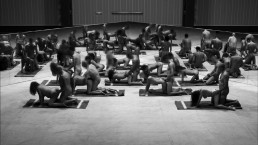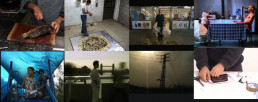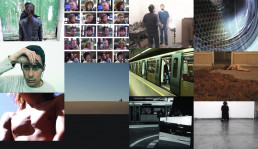1ª sessão – 1 Agosto, 23h
Museu Coleção Berardo
Le Fresnoy, uma coletânea do corpo
Programa em parceria com Le Fresnoy – Studio national des Arts Contemporains, Tourcoing
Com a presença de Alain Fleisher e Dominique Païni

Yves Ackerman, Prototype (2007), 2’35’’
Amplification of an idea Prototype (Amplificação de uma ideia Protótipo) é um filme com a duração de dois minutos que mostra um homem a ser baleado. A chuva de balas estremece o seu corpo, as mãos paralisam, ele contorce-se, fim do filme.
A ação mantém-se sem motivo, sem contexto e sem desenvolvimento. É a reminiscência dos crash tests e pura simulação. O foco está isolado da própria ação, do tiroteio, da morte. Um arquétipo de imagem que dispara associações. A performance da ação gera uma descrição exemplar, um protótipo.
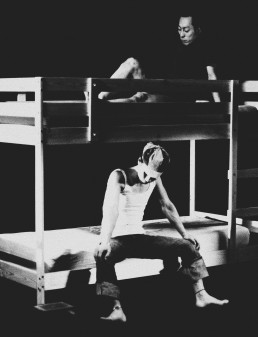
Vincent Loubere, Avanies (2007), 10’
Expo Panorama 9-10, 7/06-13/07/2008 Le Fresnoy – Studio national
A transposição de um conto do novelista Japonês Shusaku Endo traduzido para Francês como: “Un sale type” e publicado na coleção “Douleurs Exquises”, Tóquio, 1965 e 1979.
A história é a de um jovem de nome Eji que, obcecado pelo sofrimento físico, tem medo de aprender se consegue de facto suportar ou não a dor.
Para a medicina, esta dor aguda, extrema, é o locus do sofrimento – o ponto exato para onde quem sofre não consegue evitar continuamente regressar.
O objetivo do filme é oferecer uma representação visual da angústia e do medo de sofrer. Os equivalentes plásticos desta angústia são o cenário da ação e a tecnologia de infravermelhos. O filme não apresenta nenhum cenário realista. O espaço apenas contém alguns objetos e mobiliário; as cenas vão-se sucedendo e os elementos de decoração mudam. As paredes negras (imaterializadas e invisíveis) acrescentam uma atmosfera perturbante.
No filme, imagens térmicas são o equivalente plástico da revolta do personagem principal e do seu foco interno, não daquilo que o jovem vê, mas daquilo que sente. A questão fulcral está na forma como Eji se agarra ao ambiente imediato que o rodeia entendido enquanto um terror de dor. O papel do tigre é desempenhado por um ferimento que ele tem no joelho. As aparições, o medo e a angústia que impregnam o mundo interior de Eji manifestam-se no ecrã graças a uma câmara que capta o invisível, o oculto.
Cada cena é filmada como uma performance. Justaposta, cada cena responde, opõe-se e reforça as outras.
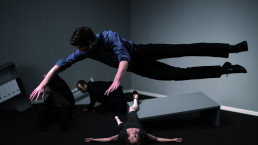
Clorinde, Naufrage (2007), 6’
Naufrage enumera medos: a narração para num instante gélido.
Mas Naufrage relata algo. De que fala? Não sabemos… Talvez um acidente, uma depressão, uma explosão? Esta cena pode ser o pico de um cenário de catástrofe: o momento da emoção física. No entanto, nada na sequência de eventos tenta explicar este estado das coisas.
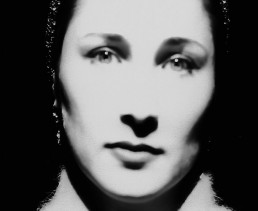
Eric Pellet, Admosh (2004), 6’
“O nosso trabalho começa com o rosto humano”, teorizava já há algum tempo Ingmar Bergman. Cinema e rosto, uma experiência do rosto provocada por uma epifania da imagem, eis do que se trata em Admosh, isto é, conseguir a proximidade do rosto graças à matéria cinematográfica, encará-lo pela via da materialidade da imagem-luz, até ao ponto limite onde essa proximidade altera a perceção.
Os rostos filmados são de tchetchenos, refugiados políticos em França. Alguns deles tem o nome de Adam. Adam tem também nesta língua o significado de “Homem” e Admosh o seu plural significa ao mesmo tempo, os homens, o povo, a humanidade. No momento em que esse povo sofre um lento genocídio que se arrasta numa guerra sem fim é urgente dar de novo um rosto a este povo sem imagem.
A chama das vidas, dos rostos, vibra sobre um dispositivo cruel, uma brancura letal. Aqui, o negro protege-os, o branco ameaça-os. Sinal de um combate entre o excesso de luz e profundas trevas, a luz é aqui fulcral, ela cria a dramaturgia, ela adquire o valor de tragédia. Neste limbo, o não-rosto pode sempre aflorar debaixo do rosto. É necessário depurá-lo, desmascará-lo, torná-lo imaterial para melhor nos deixarmos penetrar por ele. Uma morada silenciosa, uma apóstrofe sem objeto, pesam sobre este olhar-câmara. A boca é muda, só o rosto fala. Emerge uma tensão entre a vulnerabilidade explícita, um desnudamento e a expressão de uma resistência, a emergência de algo indestrutível. Este frente a frente, esta frontalidade radical arrasta uma responsabilidade face à autoridade.
Admosh trabalha a irradiação com um princípio de vida, procura um ritmo, uma escansão aquilo que encarna o frémito da vida. Este retrato mudo do povo tchetcheno exilado, o seu rosto visível, lembra-nos que “ser, é ser visto”.
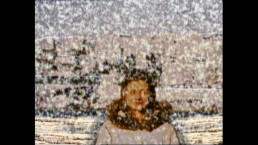
Slavica Ceperkovic, Ville Blanche (2003), 2’30’’
Ville Blanche é um vídeo que analisa a linguagem e a sua capacidade de transformar um ambiente. A cena passa-se na paisagem urbana de Belgrado, uma cidade reconstruída 38 vezes ao longo da sua história. Uma mulher convida o espectador a falar, transformando a galeria num espaço de audição. Esperando, começa a falar do significado do nome Belgrado (cidade branca) e compara-a com um puzzle que criou. Enquanto fala, neve começa a cair na sua cidade, amontoando-se desordenadamente, para ser afastada apenas com um gesto silencioso.
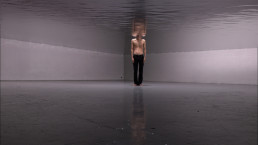
Mihai Grecu, Coagolate (2008), Vídeo-poema, HD, 7’
Ausência, presença e distorções aquáticas numa coreografia de fluidos; forças enigmáticas distorcem as leis da física e afetam o comportamento dos seres vivos e dos espaços purificados.
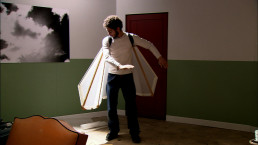
Jannick Guillou, Interludes (2007), 10’13’’
Uma longa sequência em forma de um interminável panorama mostra-nos inicialmente um espaço vazio. Em seguida um pormenor, um casaco vermelho, marca o início de um crescendo visual que continua ao longo do filme.
Despido no início, o espaço enche-se gradualmente. Objetos, pessoas e cores ocupam o espaço de forma inexplicável. Cenários independentes e inesperados juntam-se em cada viragem. O espaço gradualmente toma forma, torna-se vivo e transforma-se na parte de trás da câmara que de forma incansável segue o mesmo caminho.
Armazenamento, desordem, saturação… O vazio feito harmonia que termina num excesso, que gera vazio outra vez, um espaço em reconstrução perpétua.
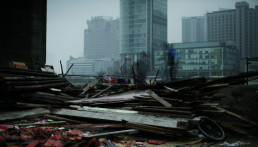
Zhenchen Liu, Under Construction (2007), 9’55’’
De forma a respeitar os modernos planos urbanos do governo e a especulação imobiliária, todos os anos em Xangai cerca de 100 000 famílias são forçadas a mudar-se porque as suas casas foram destruídas.
Este filme é a representação plástica e gráfica das minhas sensações enquanto testemunhos desta destruição.
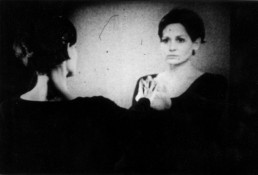
Eric Oriot, Plus Tard (1998), 10’45’’
Presa num processo que não consegue controlar, a personagem avança em direção a um ponto que continuamente retrocede, um destino para sempre inalcançável. Repetições, profundidades, reexaminar as mesmas imagens, o filme é parte de uma espiral construída a partir de círculos concêntricos, uns dentro dos outros, constantemente repetidos e, no entanto, puxando-nos sempre para as profundezas.
O efeito geral é semelhante à projeção do mito de Sísifo, adaptado ao processo cinematográfico. A tristeza de voltar atrás… E este movimento transforma-se a si próprio num fim, de modo a que o simples facto de avançar constitui uma forma de ser, onde a personagem e o filme se danificam e afundam. O filme interrompe-se, rebela-se, recusa-se a continuar até ao fim, afundando-se em meandros de onde é difícil escapar. Um filme sobre a imagem e as suas origens, um filme em movimento, que procura encontrar-se a si mesmo apesar da natureza inevitável do seu desaparecimento.
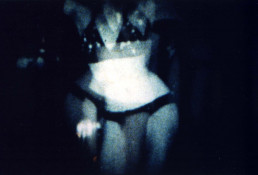
Annie MacDonell, Cinema and Visual Pleasure (2001), 2’
O filme é construído sobre um pequeno loop extraído de um antigo e burlesco filme de 8mm que mostra uma bailarina de dança do ventre movimentando-se frente a um fundo negro. A dança é evidentemente sedutora, consistindo numa séria de gestos lânguidos e circulares. Ancas, cotovelos, pulsos e ventre perpetuam círculos intermináveis dentro dos seus próprios satélites de movimento. A imagem é a preto e branco, arranhada e granulada, agravada pelas bolhas laranja do nitrato que salpicam a superfície da película. O loop expande-se pela duração do filme através da repetição e de múltiplas sobreposições. É um exercício sobre as propriedades plásticas dos dispositivos disponíveis para filmar: luz, velocidade e duração.
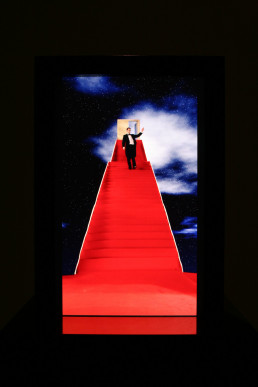
Hakeem B, Thank you for all (2006), 5’57’’
Thank you for all é uma peça irónica, repleta de ilusão e de glamour que tem a sua origem no seio da nossa própria sociedade. Thank you for all brinca com os nossos desejos, com os nossos fantasmas e transporta-os rapidamente para a realidade, para as dificuldades que encontramos todos os dias. A instalação coloca o problema do lugar do indivíduo nas sociedades ocidentais e também no preço que pagamos por “the dreams come true”.
1st session – August 1st, 11pm
Museu Coleção Berardo
Le Fresnoy, uma coletânea do corpo
Program in partnership with Le Fresnoy – Studio national des Arts Contemporains, Tourcoing
With the presence of Alain Fleisher and Dominique Païni

Yves Ackerman, Prototype (2007), 2’35’’
Amplification of an idea Prototype is a 2-minute film, showing a man in the process of being shot. The hail of bullets shakes his body, his hands cramp, he reels round, end of the film.
The action remains without motive, without context and without development. It is reminiscent of crash tests and is pure simulation. Focus is isolated on the action itself, the shooting, the death. An archetypal image that triggers off associations. The performance of the action generates an exemplary depiction, a prototype.

Vincent Loubere, Avanies (2007), 10’
Expo Panorama 9-10, 7/06-13/07/2008 Le Fresnoy – Studio national
A transposition of a short story by the Japanese novelist Shusaku Endo that translates into French as ‘Un sale type (A nasty fellow)’ and published in the collection, Douleurs exquises (Exquisite pain), Tokyo, 1965 and 1979.
The story is that of a young man (Eji) who, obsessed by physical suffering, is afraid of learning whether he would in fact be able to bear it or not.
For medicine, this exquisite pain is the very locus of suffering – the exact spot to which he who suffers cannot prevent himself from returning again and again.
The purpose of the film is to offer a visual representation of the anguish and fear of suffering. The plastic equivalents of this anguish are: the setting of the action and infrared technology. The film features no realistic set. The space contains only a few objects and furniture; the scenes run into one another, and the elements of the décor change. The black walls (not materialized and not visible) add to the disturbing atmosphere.
In the film, the thermal imagery acts as a plastic equivalent of the angst of the chief’s character and is the internal focus, not of what the young man sees, but of what he feels. The point at issue is Eji’s grasp of the immediate environment as perceived through a terror of pain. The role of the trigger is played by a wound he has on his knee. The apparitions, fear, and anguish that infuse Eji’s inner world are manifested on the screen thanks to a camera that captures the invisible, the unseen.
Each scene is filmed like a performance. Juxtaposed, each scene responds to, opposes and reinforces the others.

Clorinde, Naufrage (2007), 6’
Naufrage lists fears: the narration stops at the frozen instant.
But Naufrage relates something. What is it talking about? We don’t know… perhaps an accident, a depression, an explosion? This scene might be the summit of a catastrophe scenario: the moment of physical emotion. However, nothing in the sequence of events tries to explain this state of things.

Eric Pellet, Admosh (2004), 6’ (excerpt)
While poems in an unknown language are intimately recited to us, a collective of faces watch us. The faces filmed are those of Chechen men, women and children, political refugees in France. Some of them bear the first name Adam. In their language Adam also means “a man”. The plural, Admosh, means not only men but the people, humanity. This portrait of people with no image remembers that “being is being seen”.

Slavica Ceperkovic, Ville Blanche (2003), 2’30’’
Ville Blanche is a video that examines language and its ability to transform an environment. The scene takes place in front of the cityscape of Belgrade, a city that has been rebuilt 38 times in its history. A woman invites the viewer to speak, constructing the gallery into a listening space. Waiting, she starts to speak about the meaning of the name Belgrade (white city) and compares it to a puzzle she created. As she speaks, snow begins to fall on her and the city, building and piling awkwardly only to be removed with one silent gesture.

Mihai Grecu, Coagolate (2008), video poetry, HD, 7’
Absence, presence and aquatic distortions in a choreography of fluids; enigmatic forces twist the physical laws and affect the behaviour of living beings in purified spaces.

Jannick Guillou, Interludes (2007), 10’13’’
A long sequence in the form of an endless panorama shows us firstly an empty space, with no specificities. Then one detail, a red jacket, marks the beginning of a visual crescendo that continues throughout the film.
Bare at first, the space gradually fills up. Objects, people and colours occupy the space in an inexplicable way. Independent and unlikely scenarios come together in each turning. The space gradually takes shape, comes to life and transforms itself in the back of the camera that tirelessly follows the same path.
Stock, clutter, saturate… The void then harmony to end up with an overflow, which engenders the void again, a space in perpetual reconstruction.

Zhenchen Liu, Under Construction (2007), 9’55’’
To respect the modern urban plans of the government and the property speculations, each year in Shanghai almost 100 000 families are forced to move because their house has been destroyed.
This film is a plastic and graphic representation of my sensations as I witness this destruction.

Eric Oriot, Plus Tard (1998), 10’45’’
Stuck in a process that he cannot control, a character keeps moving forward to a point which goes backwards forever, a destination forever out of reach. Repetitions, the depths, the re-examination of the same pictures, the film is part of a spiral, constructed from concentric circles one inside the other, repeated and yet always taking us downwards to the depths.
The overall effect is like a projection of the myth of Sisyphus adapted to the cinematic process. The sadness of going back… And this movement in itself becomes an end, so that the simple fact of going forward constitutes a means of being where the character and film damage each other and sink. The film hiccoughs, rebels, refuses to go forward or to end, going deeper into the meanders from which it has difficulty escaping. A film about the image and its origins, a film in movement, which looks to find itself despite the inevitable nature of its disappearance.

Annie MacDonell, Cinema and Visual Pleasure (2001), 2’ (excerpt)
The film is constructed upon a short loop, extracted from an old 8mm burlesque film which shows a belly dancer moving against a black background. Her dance is overtly seductive, consisting of a series of languid, circular gestures. Her hips, elbows, wrists and stomach perpetuate endless circles each within their own satellites of motion. The image is black and white, scratched and grainy, and further complicated by the orange bubbles of nitrate decay that speckle the emulsion’s surface. The loop is expanded across the film’s duration through repetition and multiple superimpositions. The film is an exercise in the plastic properties of those devices available to film: light, speed and duration.

Hakeem B, Thank you for all (2006), 5’57’’
What’s humanity running after? Here is the question. And yet this question will follow each of us until our death. Humanity runs with its arms stretched out as wide as possible to catch what she’s running after. A sentimental and empty exaltation towards the mind. An outsized ambition which may lead to genius or to pure and simple madness. So why not make of this unstable balance a metaphor of the uncomfortable position of the humanity faced with its own destiny. And the story begins… Once upon a time…

